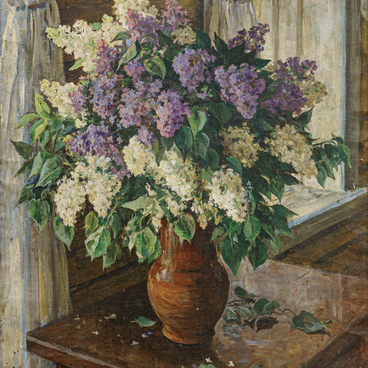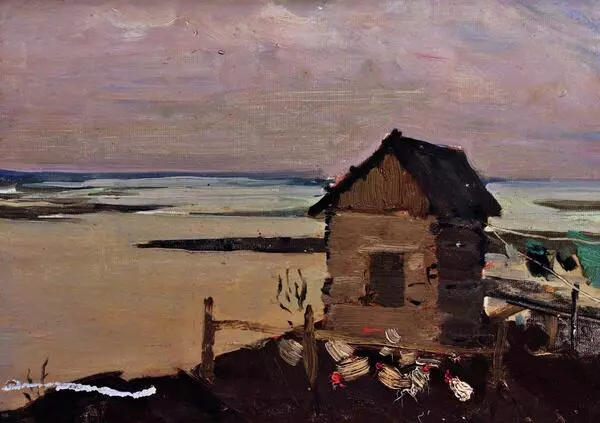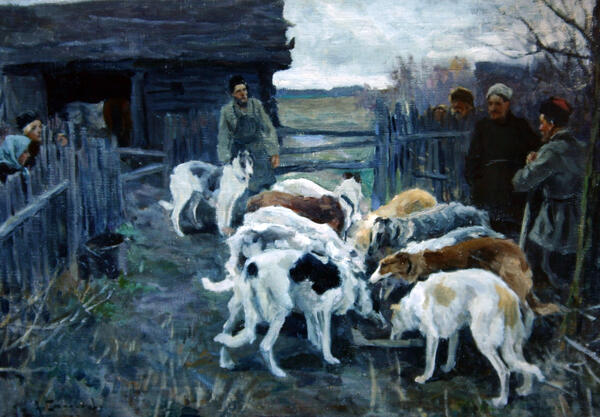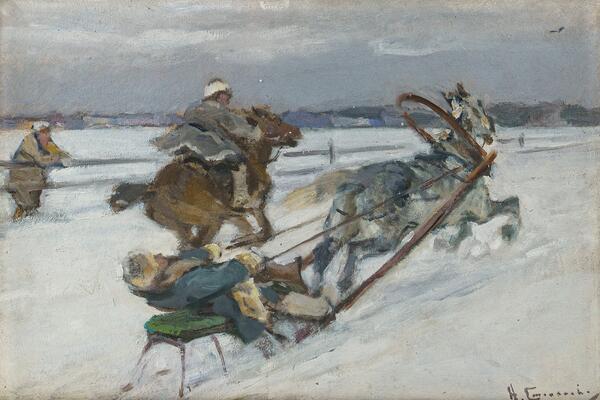Alexey Stepanovich Stepanov was a Russian painter and graphic artist who worked mainly in the genres of landscape and animalier art. The artist was rightly considered one of the best animaliers of his time and also ventured into other genres, for example, in this study called “In Filippov’s Café”.
This small painting is a genre scene taking place in a café. With light and rapid brushstrokes, the artist managed to convey his impressions of noisy Moscow life. The customers sitting at the tables — couples in love, women, and men — engage in lively and exciting conversations. Without getting into too much detail when depicting the interior and the customers, the artist was able to convey the lively atmosphere, merry laughter, happiness, joy, and carefree attitude of the customers. The scene is painted in an impressionistic manner.
After traveling around Europe in 1894 and getting acquainted with the work of the Impressionists, Alexey Stepanov began to experiment with color, light and shadow — the new techniques were enhanced by his own fresh impressions.
The artist was born into the family of a military officer in Simferopol in 1858. He lost his parents at an early age. The future painter was brought up by a guardian who insisted that he should receive the profession of land surveyor. However, Alexey Stepanov did not want to pursue this profession. He was drawn to art and wanted to paint the nature around him.
His love of painting and drawing prevailed. At first, Alexey Stepanov started auditing courses at the Moscow School of Painting, Sculpture and Architecture and later became a full-time student. One of his teachers was Illarion Mikhailovich Pryanishnikov.
In 1883, Alexey Stepanov was awarded the School’s Small Silver Medal for his drawings and studies. While still a student, he started regularly participating in exhibitions. Later, he joined the Society for Traveling Art Exhibitions and co-founded the Union of Russian Artists. He also taught the class of animalistic painting at his alma mater.
Alexey Stepanov’s works are kept at the State
Tretyakov Gallery, in regional museums, small art galleries throughout Russia,
and private collections.










